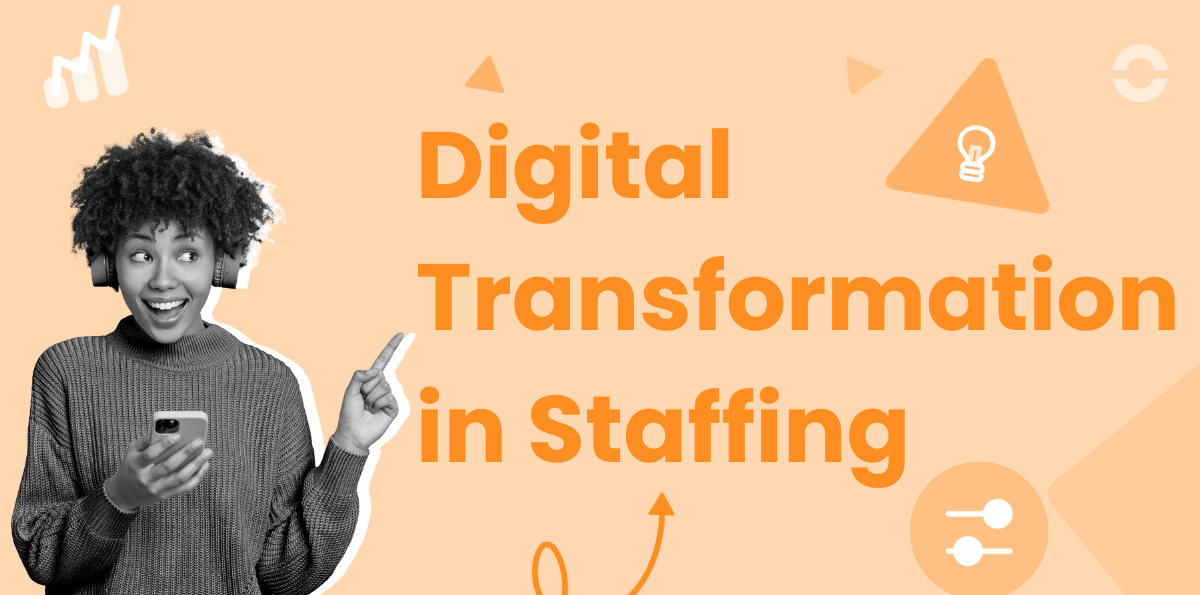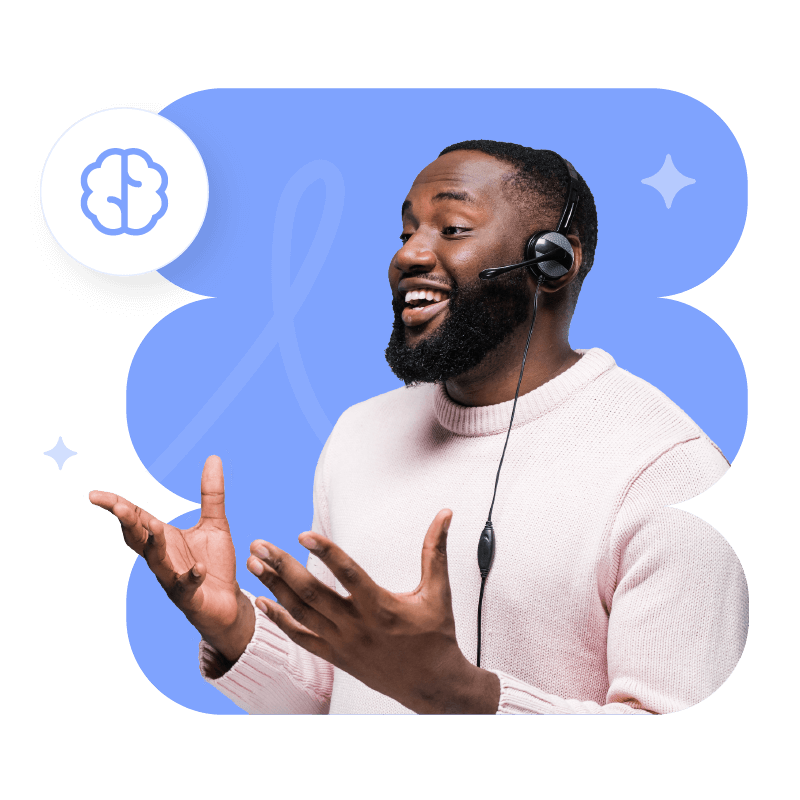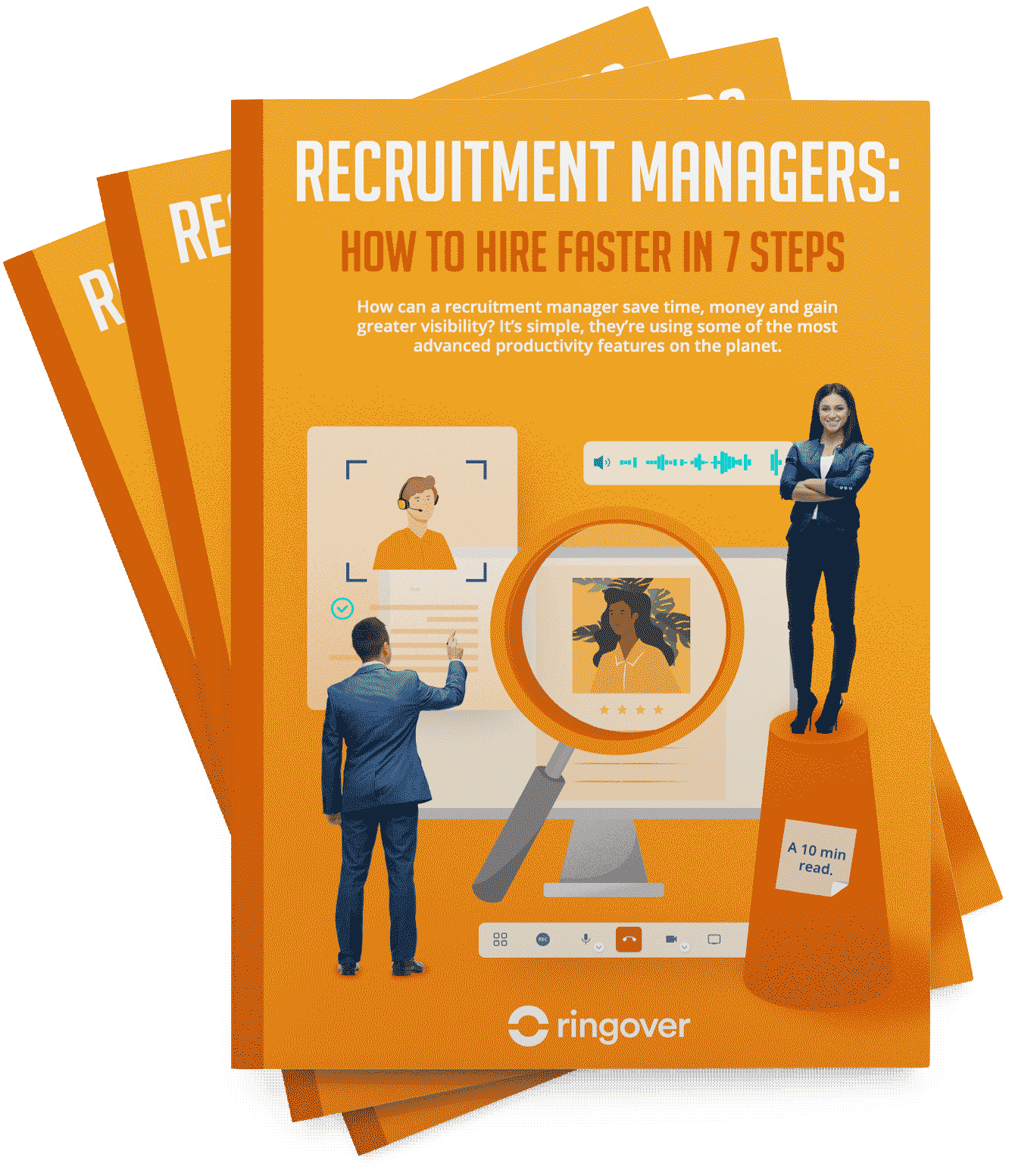Summary
In this article, we explore the different facets of digital transformation in staffing, highlighting examples, the impact on staffing operations, and the benefits of going digital.
Discover Ringover for Recruitment10 Examples of Digital Transformation in Recruiting
1. Candidate Experience
Digital transformation has enhanced the candidate experience by streamlining the application process and improving communication. AI-driven platforms offer personalized updates, feedback, and seamless application tracking. This leads to higher satisfaction and better employer branding.
There are even conversation intelligence tools like Empower by Ringover which employ sentiment analysis to identify moments of strong emotion during client and candidate interactions. Thanks to the automatic transcriptions, call summaries, and personalized AI analytics, both recruiters and their managers will have a clear understanding of what's working and what can be improved. Plus, it integrates seamlessly with your other business software to complement your tech stack.
When it comes to improving communications, VoIP software like Ringover provide multichannel communications to optimize recruiting outreach and forget stronger client relationships. With videoconferences, text messages, and unlimited calls available, Ringover ensures you can reach clients and candidates on the channel they prefer. And once you put in place a multi-pronged communication strategy, you'll be able to measure its effectiveness thanks to Ringover's intuitive analytics dashboard.
2. Social Media Recruiting
Social media platforms like LinkedIn, Facebook, and Instagram have become essential tools in social recruiting strategies. Recruiters can use targeted ads, engage with potential candidates, and build their employer brand by sharing content about company culture.
3. Chatbots
AI-powered chatbots are revolutionizing the way companies interact with job seekers. These chatbots can answer frequently asked questions, screen candidates, schedule interviews, and provide real-time updates on application status.
4. Digital Onboarding
Digital onboarding simplifies the orientation process for new hires. Automated systems allow employees to complete paperwork, training modules, and company introductions online, which reduces administrative burden and accelerates the integration process.
5. Applicant Tracking Systems (ATS)
ATS platforms have become a cornerstone of recruitment strategies. These systems manage resumes, track applicant progress, and streamline communication between HR and candidates, saving time and increasing efficiency. Popular ATS like Bullhorn, Vincere, Recruit CRM, and more also integrate with omnichannel contact centers software like Ringover and AI hiring tools like Empower for improved productivity.
6. People Analytics
People analytics leverage big data to assess employee performance, calculate churn, predict future hiring needs, decide on recruitment techniques, and improve customer retention rates. Using this data, recruiters can identify trends in candidate behavior, allowing for more informed decisions in future hiring processes.
7. Job Boards
The transition to digital job boards such as Indeed, Glassdoor, and Monster has expanded the reach of job postings, allowing recruiters to source talent from a larger and more diverse pool of applicants.
8. Automated Recruitment
AI-powered automation tools assist in the early stages of recruitment by screening resumes, scoring candidates based on predetermined criteria, and reducing human biases. Automation speeds up the hiring process, enabling recruiters to focus on top-tier candidates.
9. Video Interviewing
Video interviewing platforms, such as Zoom and Microsoft Teams, have made remote hiring more convenient. Recruiters can conduct interviews with candidates anywhere in the world, reducing geographical barriers and speeding up the hiring process.
10. Predictive Analytics
This technology helps recruiters forecast future hiring needs, assess which candidates are more likely to succeed, and identify at-risk employees. By analyzing past performance data, companies can make more accurate hiring decisions.
What is Digital Transformation in Staffing?
Digital transformation in staffing refers to the adoption of technology to streamline operations, enhance candidate engagement, and improve overall recruitment processes. It involves implementing digital tools such as Applicant Tracking Systems (ATS), CRM platforms, and automation technologies to match candidates with jobs faster and more efficiently.
Digital transformation enables staffing agencies to improve the quality of their services, stay competitive, and respond to client and candidate needs in real time. By leveraging data analytics, automation, and AI, staffing agencies can better predict hiring trends and optimize their placement strategies.
Ways Digitalization Has Changed Staffing Operations
1. Automated Resume Screening
Automation has replaced manual resume screening with algorithms that filter candidates based on specific criteria, improving speed and reducing bias.
2. Enhanced Candidate Sourcing
Digital platforms allow staffing agencies to find candidates through social media, job boards, and professional networks, reaching a wider audience in less time.
3. Improved Client Communication
Cloud-based tools facilitate seamless communication between staffing agencies and their clients, ensuring faster updates, improved transparency, and stronger client relationships.
4. Efficient Data Management
People analytics and data management platforms store and organize vast amounts of candidate and client information, providing insights for future hiring needs and trends.
A VoIP phone provides resources far beyond just unlimited calls, like tools to help with productivity and efficiently.
Benefits of Staffing Digital Transformation
- Increased Efficiency: Automation and AI reduce manual tasks, making the recruitment process faster and less prone to human error.
- Better Candidate Experience: Digital tools ensure faster communication, transparency, and engagement with candidates, improving their overall experience with the staffing agency.
- Data-Driven Insights: Analytics tools provide staffing agencies with valuable insights into hiring trends, allowing them to forecast demand and optimize talent placements.
- Cost Savings: By digitizing processes, staffing agencies save on operational costs and increase their ability to scale without needing to expand their workforce proportionally.
Digital Transformation in Recruiting FAQ
What are the 4 main areas of digital transformation?
The four main areas of digital transformation are:
- Technology Integration: Implementing new technologies to improve efficiency.
- Data and Analytics: Using data to make informed decisions and predict future trends.
- Process Automation: Streamlining workflows to increase productivity.
- Customer and Employee Experience: Enhancing satisfaction and engagement through personalized and efficient digital interactions.
What is digital transformation in HR?
Digital transformation in HR refers to using technology to automate HR processes such as recruiting, employee onboarding, payroll, performance management, and training. By adopting tools like HR software, ATS, and employee engagement platforms, HR departments can improve efficiency and provide a better employee experience.
What are the 3 P's of digital transformation?
The 3 P's of digital transformation are:
- People: Ensuring employees and customers are at the center of digital changes.
- Processes: Streamlining workflows and operations for greater efficiency.
- Platforms: Implementing technology platforms to enhance communication, collaboration, and data management.
How does digital technology improve the recruitment process?
Digital technology improves recruitment by:
- Automating repetitive tasks such as resume screening and interview scheduling.
- Expanding candidate reach through social media, job boards, and online advertising.
- Providing data-driven insights for better decision-making using predictive analytics and AI-powered tools.




